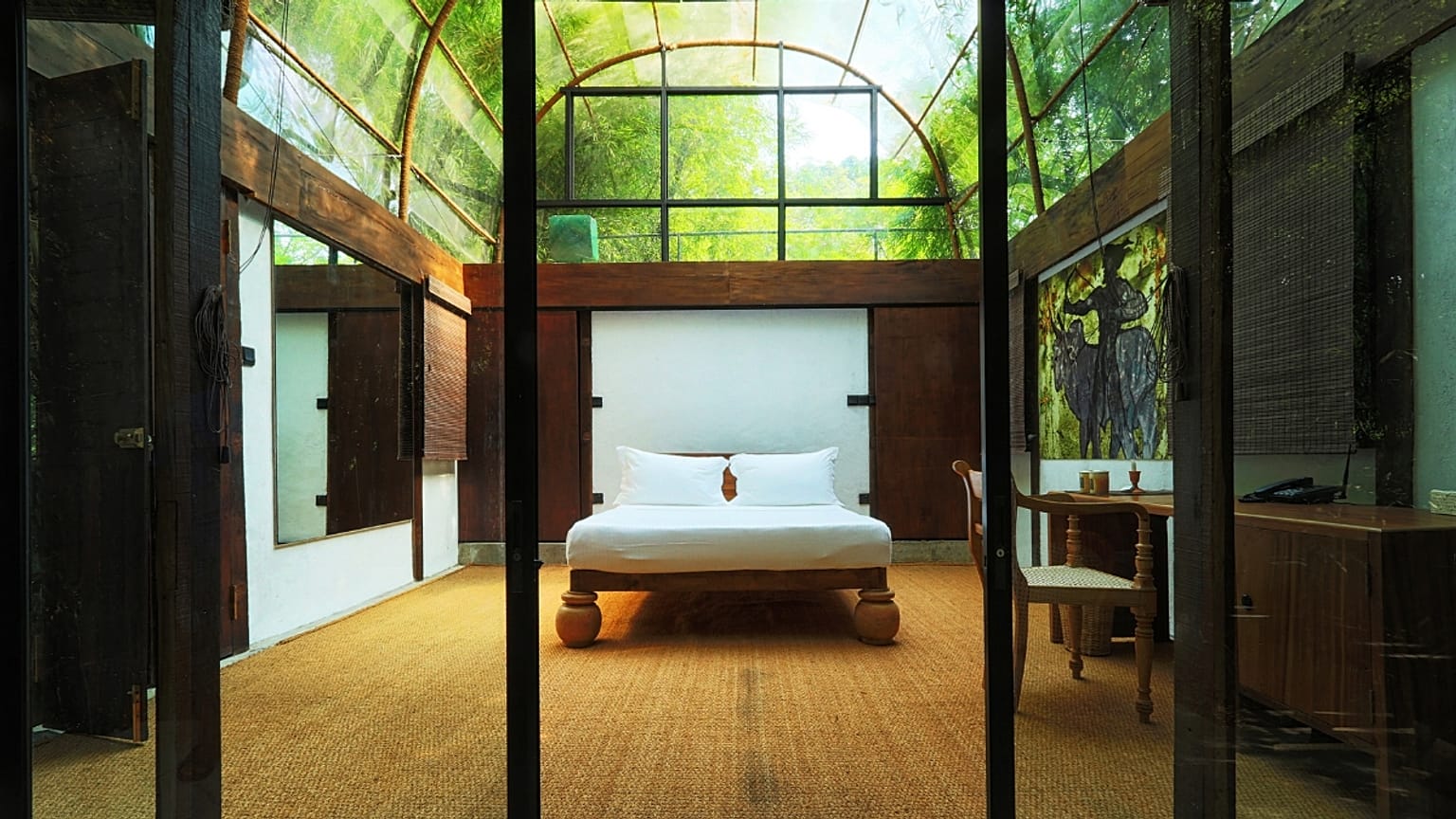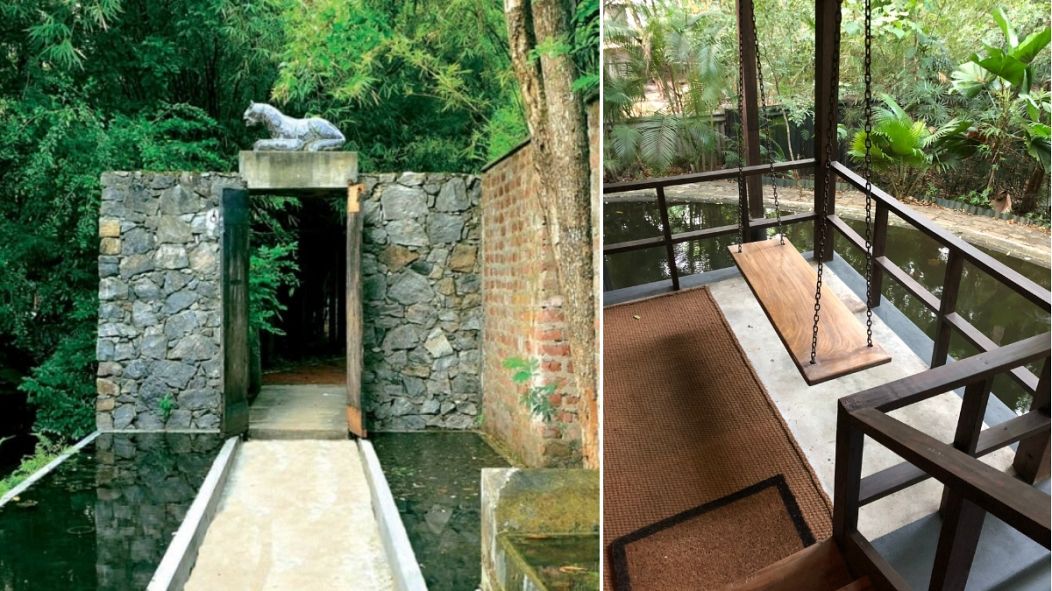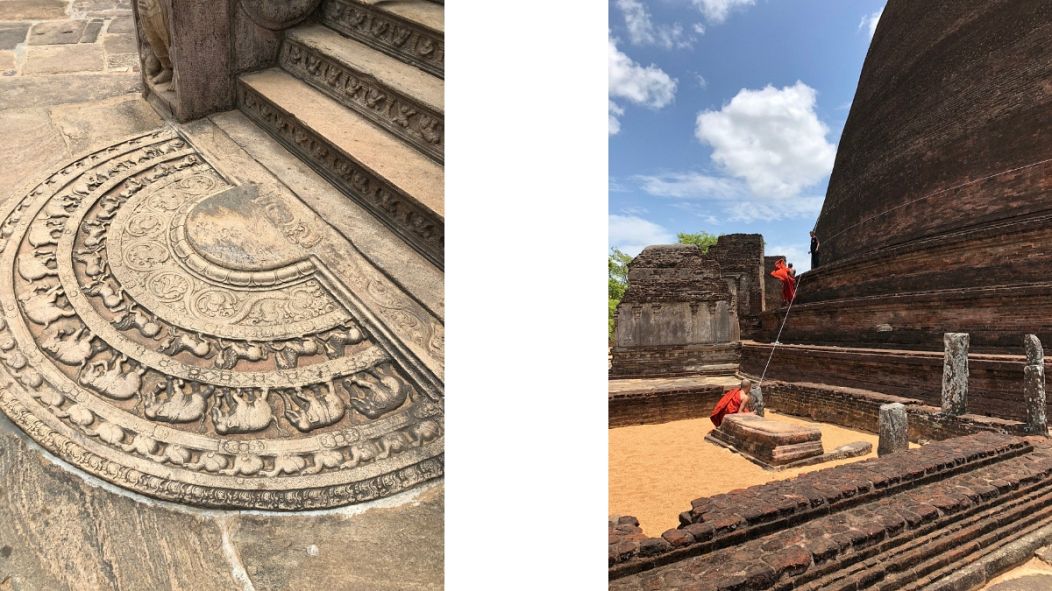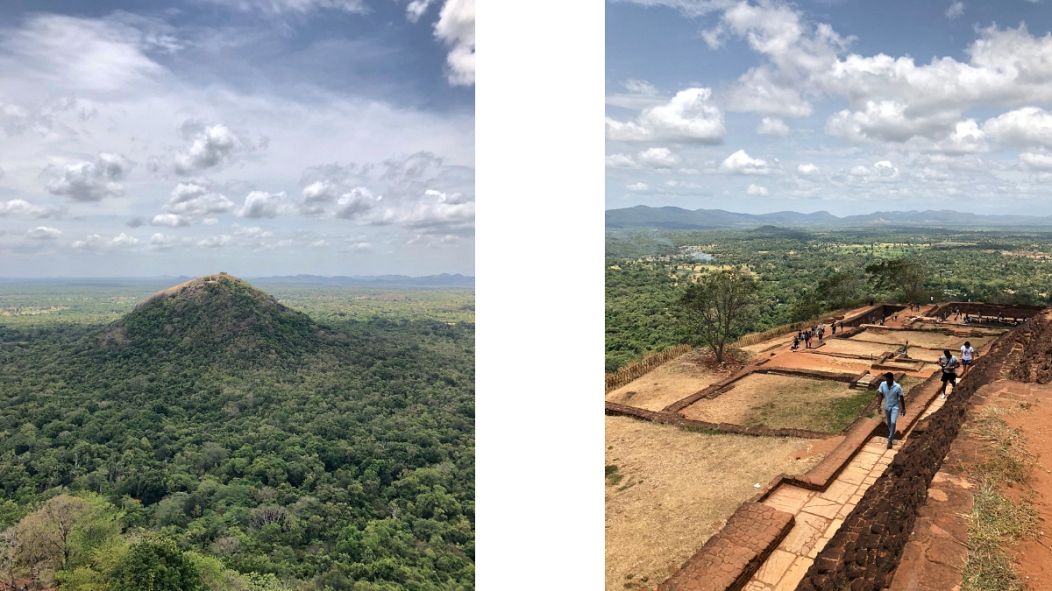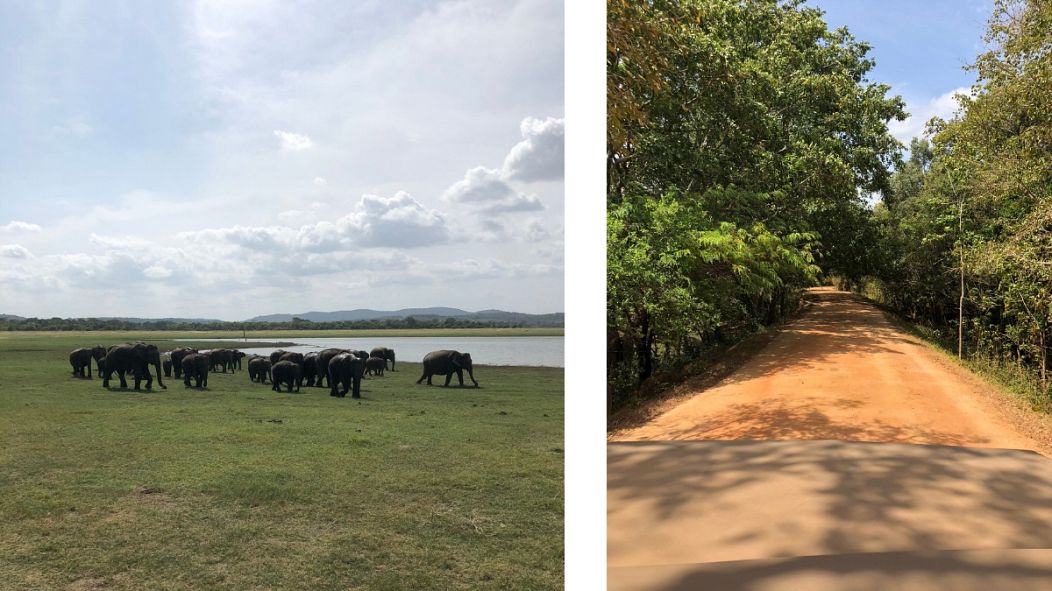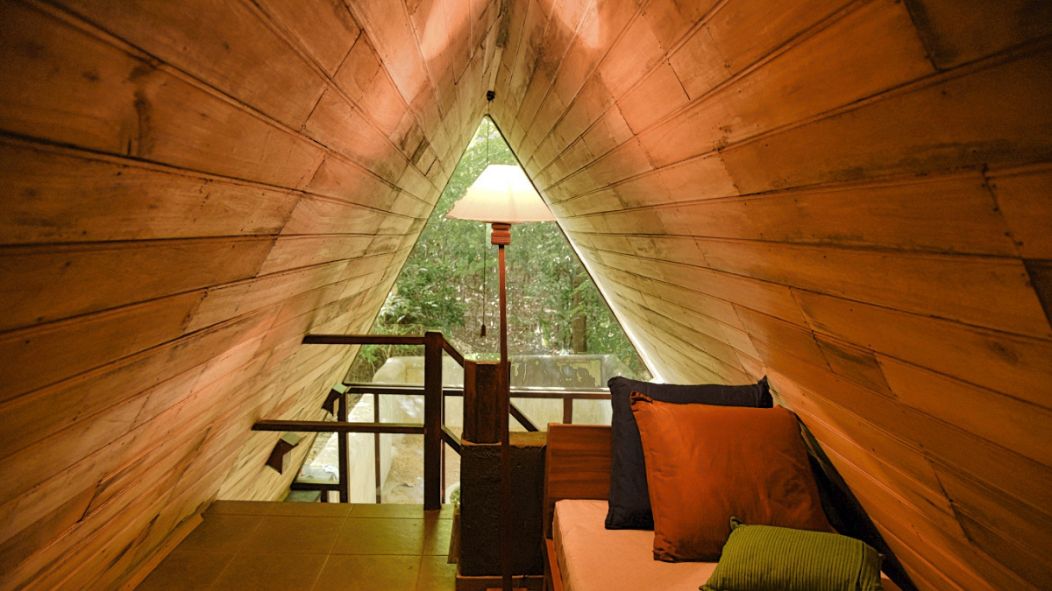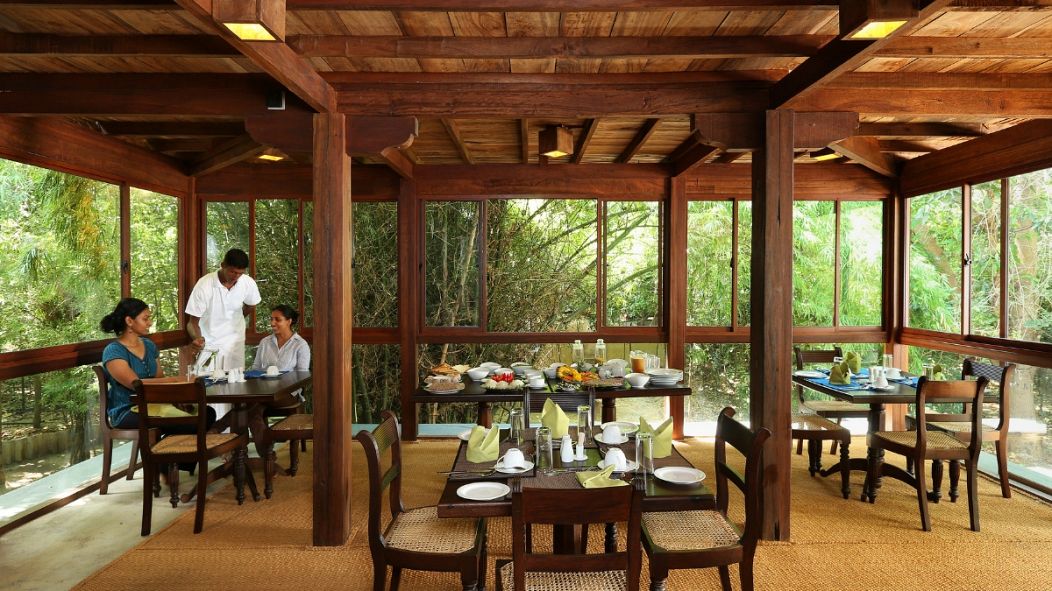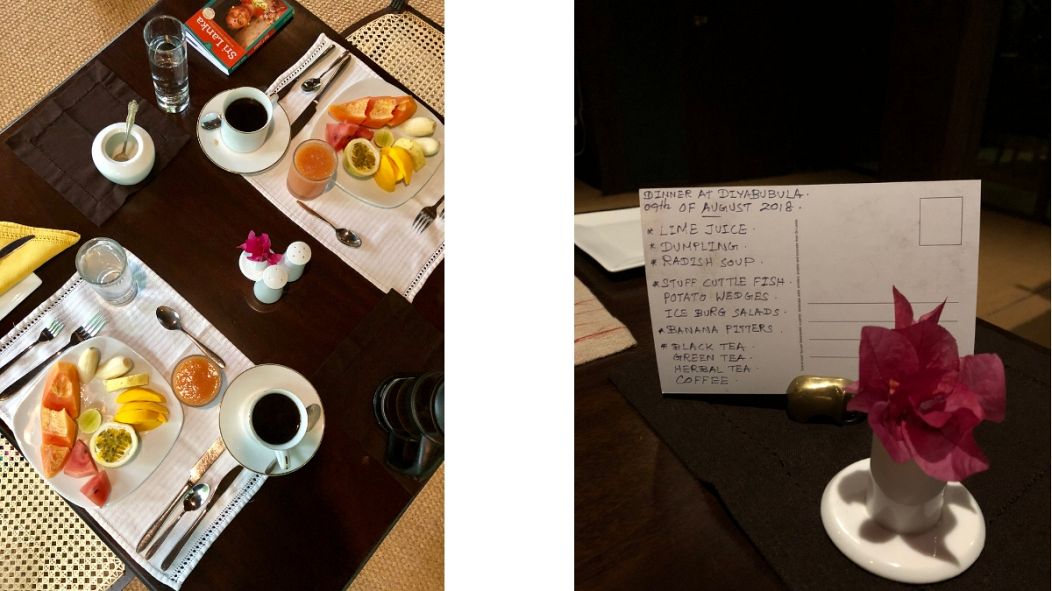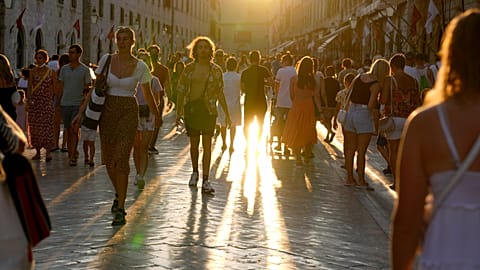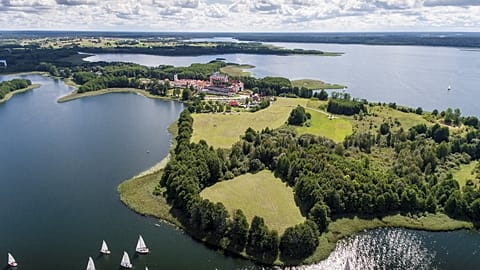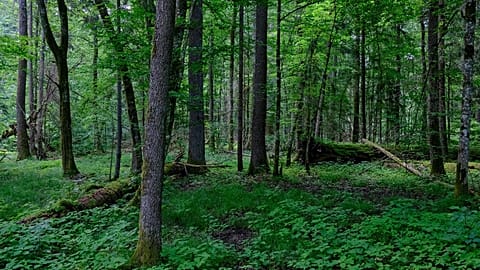We tried Diyabubula, a luxury lodge blending design and nature in Sri Lanka’s wilderness
 ADVERTISEMENT
ADVERTISEMENT
“All of this was petty much accidental” says Laki Senanayake as we sit down on his roof terrace overlooking a pond, hidden at the heart of a thick jungle. The artist in residence inherited this piece of land back in 1975 turning it into his own eco-paradise amidst a population of rare exotic birds, playful monkeys and lush tropical forest.
“Accidental” because he couldn’t imagine his secret hideaway would eventually catch the eye of Barberyn Resorts, a leading Sri Lankan hotelier with 6 resorts already in place. Taking inspiration from the aquatic architectural aesthetics initiated by Laki for his own home - a water villa on stilts - Barberyn set up Diyabubula, the “bubbling fountain”, comprising five independent accommodations. It turned out to be the first and only boutique hotel in this highly touristic area called the "Cultural Triangle".
Sri Lanka's cultural triangle and 'The Gathering'
Diyabubula is strategically located close to major Unesco heritage sites not to miss whilst visiting the country. The temples of Dambulla featuring giant Buddha statues nestled in cave mountains are 15 minutes away. It takes 45 minutes to reach the majestic fortress of Sigiriya, from which the view over the region is breathtaking, and the beautifully preserved ancient city Polonnaruwa is also nearby. A personal driver at Diyabubula is available to take guests to these points of interest, thus avoiding to rely on overcrowded public transport or non-professional drivers. As a bonus: he will also kindly bring you to all the best restaurants in the area - all you can eat buffet in the back of local people's house - you could never find on your own.
Whilst Minneriya and Kaudulla National Park, located 40 kilometers up to the North, offer another kind of sight: wild animals to admire in their natural habitat. “The Gathering” happens annually, during dry season between July and October, when 300 elephants coming from all over the North Central Province slowly make their way out of the shady trees and out onto the plains towards the natural tank of water to drink and snack on fresh newborn grasses. Of course, this is no secret and hundreds of tourists also gather at the same place. The place gets crowded with jeeps very quickly that’s why, following our driver’s advice, we booked the entrance ticket in the morning and visited the park no later than 2pm to avoid queing in the heat. It turned out to be life saving.
Connecting with nature through design
Back at the hotel, the connection with the natural world continues. In the two floors Water Villa you genuinely feel at one with the surrounding vegetation. The bedroom is at tree level raised approximately 5 meters above a pond and the only separation between you and the jungle are robust transparent glass walls. “This architecture has a function besides its obvious attractiveness” explains the general manager. “It keeps the wildlife away whilst offering guests a chance to connect with the wilderness. Diyabubula also symbolizes the power of the earth and the creativity bubbling up.” he adds.
Because it remains quite a confidential address, shared amongst a small community of curious travellers in the know, the place is rarely fully booked and you could even have the 'hotel' all to yourself for one night like it happened to us. The food being cooked, on order, daily, according to your personal preferences and the availability of local ingredients makes the whole experience even more unique. Each meal usually comes as 4 courses finished by fragrant Sri Lankan herbal tea, the beverage that made Ceylon (the country’s former name) famous internationally in the late 1800. There are no meat or alcohol on the menu.
Sustainability, aesthetics and comfort
Besides food, which is organically produced by Barberyn on its own plantations in the Central Province, materials to build Diyabubula’s 5 rooms were also locally sourced. Working alongside Sri Lankan architect Greffrey Bawa as well as Ulrik Plesner, artist Donald Friend and landscape designer Bevis Bawa, Laki chose one hundred year old railway sleepers and other recycled woods as basic building materials and combined it with Sri Lankan timber, which was then hand-crafted on location. The interior design including monumental luminaires and digitally printed paintings are also Laki’s original creation.
A self-taught painter, landscape designer and sculptor, Laki is part of a generation of artists that emerged in the 1950's in Sri Lanka. "His spontaneous approach to drawing, subjects and techniques have outraged convention many times and repeatedly served as a liberating influence on the younger generation. Single minded, witty and musical, the outrageous frankness of his nudes, his delight in the animal in nature, all these have caused scandal and continue to do so." writes architect, conservator and scholar Dr. Ronald Lewcock in his book Laki.
Besides the water villas, Laki also imagined a "Bamboo Grove", a villa with a semi-circular transparent roof under a canopy of bamboo, which was clearly designed for stargazing. Additionally, the Tree House, which is on the ground and not in the air, is a house in the shape of a tepee. It’s name comes from the living Arcunut trees trained to grow at a certain angle, therefore building the structure for the roof. Comfort is not sacrificed over the “glamping” experience and you’ll find a king-size bed and luxurious bathroom on all 5 accommodations. Diyabubula may be this 'accidental' gem hidden in the lush wilderness, but we bet it won't stay a kept secret for long.
Doubles from €200 per night. For more information visit www.diyabubula.com














